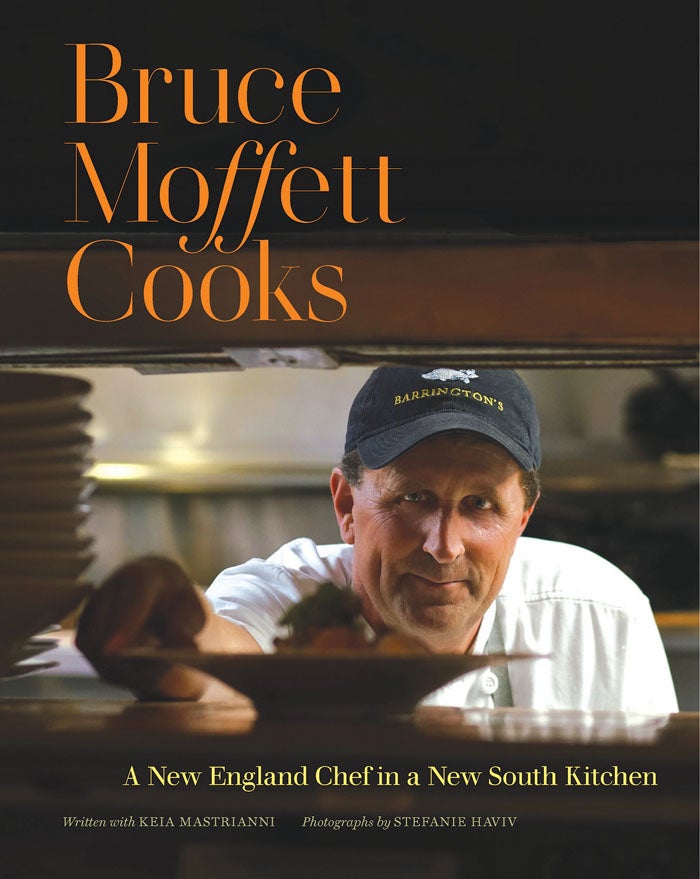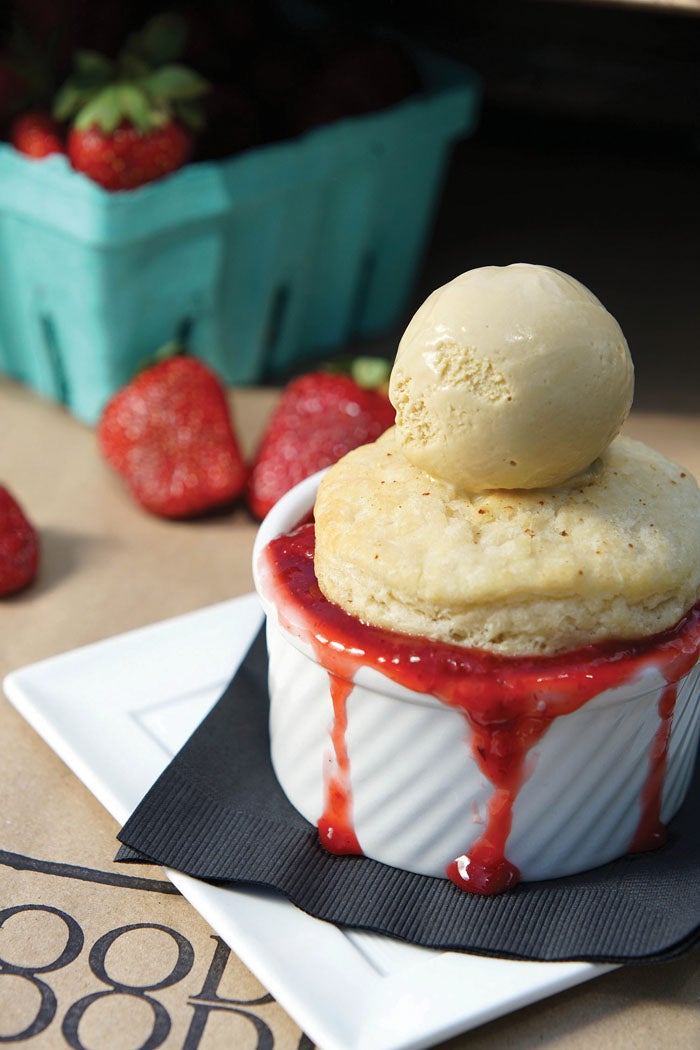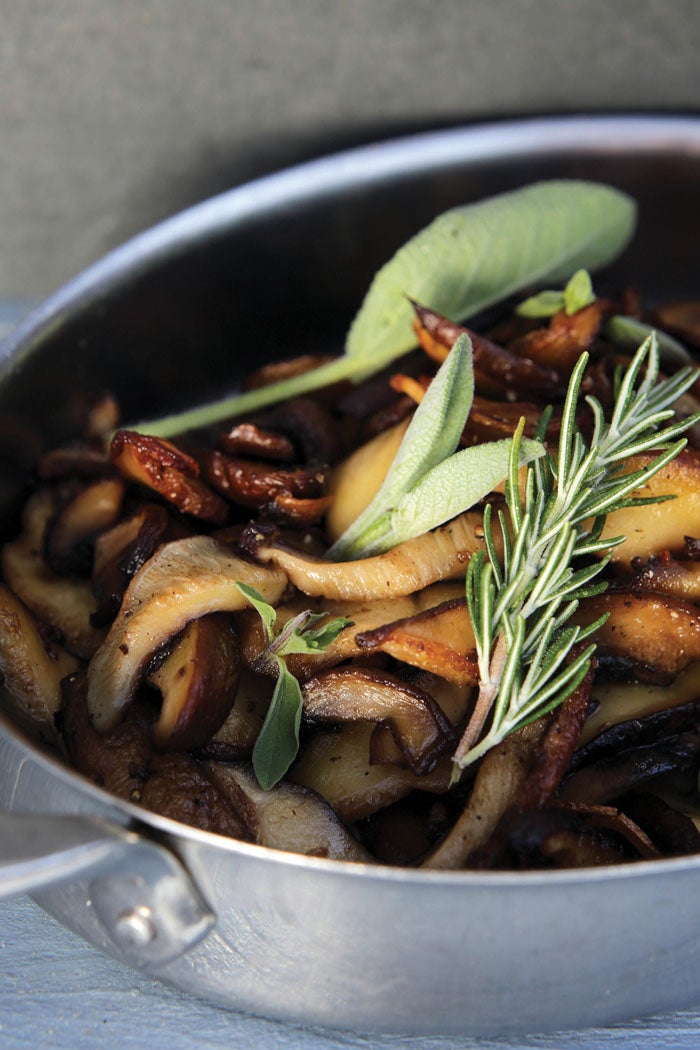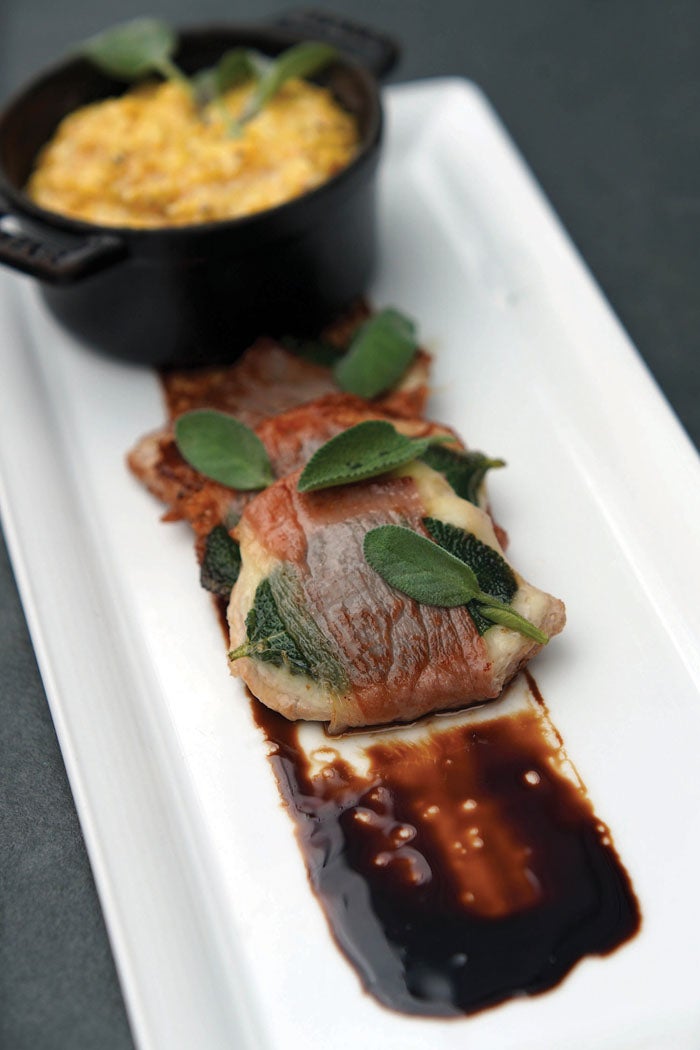Combining New England heritage with Southern flavors
Published 12:00 am Tuesday, May 7, 2019
“Bruce Moffett Cooks: A New England Chef in a New South Kitchen,” by Bruce Moffett. Written with Keia Mastrianni. Photographs by Stefanie Haviv. 304 pp., 70 color plates, index.
A native New Englander, chef Bruce Moffett fell in love with the South. Founding chef of three Charlotte restaurants — Barrington’s, Good Food on Montford and Stagioni — Moffett is known for creating dishes inspired by both New England and southern culinary traditions.
With the simple, compelling aim of making people happy through his cooking, the chef builds immense flavors in every morsel he prepares and serves — and in this lavishly illustrated cookbook he shows you how to do the same.
From small plates of Pickled Butternut Squash Ribbons to Creamy Spring Onion Soup, the meal you make will start out beautifully. Recipes provide step-by-step directions for cooking entire composed dinners, from Pecan-Crusted Lamb with Chipotle BBQ Sauce and Sweet Potatoes to Swordfish with Summer Succotash. Among the book’s 120 recipes are irresistible soups, salads, pizza, pasta, vegetable dishes, breads and desserts.
When he arrived in Charlotte almost 20 years ago, Moffett became one of the first chefs there to establish creative, long-term relationships with local farms and purveyors. In his book, written with Keia Mastrianni, he shines a spotlight on the North Carolina producers who provide many of the beautiful ingredients featured daily in his restaurants.
“A terrific debut from a talented chef who is refreshingly free of ego and pretense, and focused on creating the best dishes possible.”— Publishers Weekly, starred review.
He dedicates the book to his mother and grandmother, from whom he learned to cook. “Some of our best times together happened in the kitchen, where she would take the day to slowly simmer red sauce on the white electric stove …”
His grandfather owned a large piece of property in Rhode Island that became known as Wilderness Farms. His grandmother, Betty Perkins, was called Craig (never Grandma) and also influenced his recipes. She was a precise woman, who did things in order and read “The Joy of Cooking” like the Bible.
She taught him the value of mise en place, a French term that means “everything in its place.” It means having all your ingredients ready and organized before starting to cook.
His recipes have flare and require attention, but if he owns three restaurants, they must be pretty good.
All recipes from BRUCE MOFFETT COOKS: A NEW ENGLAND CHEF IN A NEW SOUTH KITCHEN. Text and photographs copyright 2019 by Bruce Moffett. Used by permission of the University of North Carolina Press. www.uncpress.org
Roasted Mushrooms
At Good Food on Montford, we serve roasted mushrooms as a standalone dish on our small plates menu, but it marries with all kinds of flavors, particularly those from the Mediterranean. For instance, they go nicely with our Pork Saltimbocca. We treat them simply, sautéed in butter and olive oil with garlic and a fistful of fresh herbs. The result is a versatile recipe that works nicely as a side dish but also qualifies to occupy the center of plate.
Serves 6
2 pounds assorted mushrooms (such as oysters, shiitakes, and creminis)
1/4 cup extra-virgin olive oil
1 Tbsp. kosher salt
1 Tbsp. unsalted butter
1/4 cup peeled and thinly sliced garlic
2 Tbsp. chopped fresh rosemary
1 Tbsp. chopped fresh thyme
2 Tbsp. chopped fresh oregano
1 tsp. black pepper
Trim any mushrooms that need to be stemmed, then tear or cut them into roughly 2-inch pieces.
Heat the olive oil in a large, nonstick sauté pan over medium heat. Add the mushrooms and salt. Cook, stirring occasionally for 5 minutes, or until the mushrooms start to release their liquid. Continue cooking until the mushrooms take on a deep, concentrated color, another 6–10 minutes.
Push the mushrooms to the far side of the pan to make room for the remaining ingredients. Add the butter and garlic and cook until the garlic is lightly browned. Add the herbs and black pepper to the garlic, stirring for a few seconds to release their oils. Stir everything together, incorporating the mushrooms. Serve immediately.
Pork Saltimbocca
Saltimbocca is a simple classic, and sometimes I like to remind my guests why a classic became a classic in the first place. Thin cutlets of pork tenderloin are topped with provolone, prosciutto and fresh sage, then finished with a buttery marsala sauce. We like to serve it with creamy polenta, but herb-roasted potatoes or asparagus would also be good companions.
Note: This is probably not an ideal dish for those with sensitivities to salt.
Special equipment: meat mallet
Serves 6
2 pounds pork tenderloin
Kosher salt and black pepper
1 bundle fresh sage (about 24 leaves), divided
12 slices provolone
12 pieces prosciutto, thinly sliced
Extra-virgin olive oil
1/2 cup Marsala
1 cup chicken stock
1 Tbsp. unsalted butter
Preheat the oven to 250 degrees. Trim the tenderloin of all fat and silver skin and slice it into 6 equal portions.
Place one portion of the tenderloin, cut-side up, on a piece of plastic wrap. Cover it with another sheet of plastic wrap. Gently pound the pork with the smooth side of a meat mallet to 1/4 inch thick. Remove the plastic wrap and lightly salt and pepper the pork. (Keep in mind that the prosciutto will add a good amount of salt.) Repeat the process with the remaining portions.
To assemble, place 3 leaves of sage on top of each tenderloin, then cover the sage with 2 slices of provolone and 1 slice of prosciutto. Repeat the process with the remaining portions.
Heat a nonstick pan over medium-high heat, coating the bottom with olive oil. When the oil starts to shimmer, add the assembled saltimbocca, prosciutto-side down. Cook in batches to avoid overcrowding.
When the pork begins to turn white around the edges (about 3 minutes), flip the saltimbocca and cook for 1 minute more. Transfer the pork to an oven-safe plate and hold in the warm oven. Keep the pan handy for the sauce.
Drain the grease from the pan in which the pork was cooked. Add 6-7 sage leaves and toast them slightly. Remove the pan from the stovetop and add the Marsala. This will prevent a dangerous flare-up while you pour. Return the pan to the stovetop. (The Marsala will flame. Be careful.) When the Marsala reduces by half, add the chicken stock and reduce the sauce until it coats the back of a spoon. Swirl in the butter until it has melted, then remove the pan from the heat. Spoon the Marsala sauce over the entire dish and serve.
Swordfish with Summer Succotash
This is my go-to dish in the summertime, when I gather all that’s good about the season from the local farmers’ market. I use swordfish because it’s always been my favorite, but this recipe works well with other white, meaty fish, including wahoo and cobia.
Special equipment: high-speed blender
Serves 4
For the swordfish
3 Tbsp. extra-virgin olive oil
4 (1-inch-thick) swordfish steaks
Kosher salt and black pepper
For the succotash
3 Tbsp. extra-virgin olive oil
4 ears of corn, kernels cut from cob
1 small yellow onion, diced
3 cups fresh (or frozen) lima beans
1/2 cup cherry tomatoes, quartered
1/2 cup white wine
1 tsp. fresh lemon juice
1/2 cup clam juice
1 cup heavy cream
2 tsp. kosher salt, plus more for seasoning
1/2 tsp. ground white pepper
1/4 cup Basil Pesto, or more as desired
Black pepper
To make the swordfish
Preheat the oven to 400 degrees. Heat the olive oil in a large, ovenproof pan over medium-high heat. Season the swordfish with salt and pepper on both sides and add the steaks to the pan. Sear them until a golden crust develops on the bottom, about 3-4 minutes. Flip the steaks, then finish them in the oven, about 10 minutes more. When ready, the fish should be just barely cooked through. Meanwhile, cook the succotash.
To make the succotash
Get a pan screaming hot, then add the olive oil. Add the corn and toss the kernels for 2 minutes, until they have a little color. Add the onion and cook for 1 minute, then add the lima beans and cook for 1 minute more, continually tossing. Add the tomatoes, cook for 1 minute, then add the wine, lemon juice, and clam juice. Let the wine cook off, about 3-5 minutes, then add the cream, salt, and pepper, and simmer for 4 minutes. The mixture will reduce and thicken slightly. Once it reduces, turn off the heat and stir in the pesto. Add more pesto, if desired.
To assemble
For each serving, spoon some succotash on a plate or into a wide, shallow bowl. Top with a swordfish steak and garnish with extra basil.
Strawberry Goat Cheese Cobbler
We’re lucky to have two distinct growing seasons for strawberries in the Piedmont, which means that we have access to locally grown strawberries from the beginning of spring through the fall. This play on a classic cobbler involves strawberries macerated with sugar and plenty of vanilla bean, with a touch of red wine to deepen the ripe berry flavor. Goat cheese adds just the right amount of savory to give this classic dessert a mature twist. A simple scoop of ice cream finishes this dish.
Serves 8–10
For the filling
2 quarts strawberries, hulled and rinsed
1/2 cup sugar
2 vanilla beans, scraped
1/2 cup red wine
1/4 cup cornstarch
3/4 cup cold water
1/2 cup crumbled goat cheese
For the crust
1 cup cake flour
1/3 cup all-purpose flour
1/4 tsp. kosher salt
1 1/2 tsp. baking powder
4 Tbsp. (1/2 stick) unsalted butter, frozen
2/3 cup heavy cream
2 Tbsp. unsalted butter, melted
2 Tbsp. sugar
Preheat the oven to 350 and grease a 9 × 13-inch baking dish.
To make the filling
Combine the strawberries, sugar, and vanilla bean and pods, and macerate for 30 minutes. In a saucepan, bring the wine to a boil. Let the wine boil for 1 minute, then add the macerated strawberry mixture and return to a boil. Make a slurry by mixing together the cornstarch and water, then add it to the mixture, whisking constantly until it thickens. Remove the pan from the heat; discard the vanilla bean pods. Pour the filling into the prepared baking dish. Top it with the crumbled goat cheese and set aside.
To make the crust
In a large mixing bowl, whisk together the flours, salt, and baking powder. Grate the frozen butter into the bowl. Use your fingers to incorporate the butter evenly until the mixture is crumbly and pea-size. Add the cream and mix just until moistened.
Transfer the contents to a floured work surface and bring the dough together into a solid mass. Roll it into a rectangle about 1/4 inch thick and slightly larger than the baking pan. Drape the dough over the top of the pan, pressing it along the sides to snugly cover the filling. Brush the dough with melted butter and sprinkle it with the sugar. Bake for 1 hour, or until the crust is golden and the filling is bubbly. Serve warm with your favorite ice cream.








